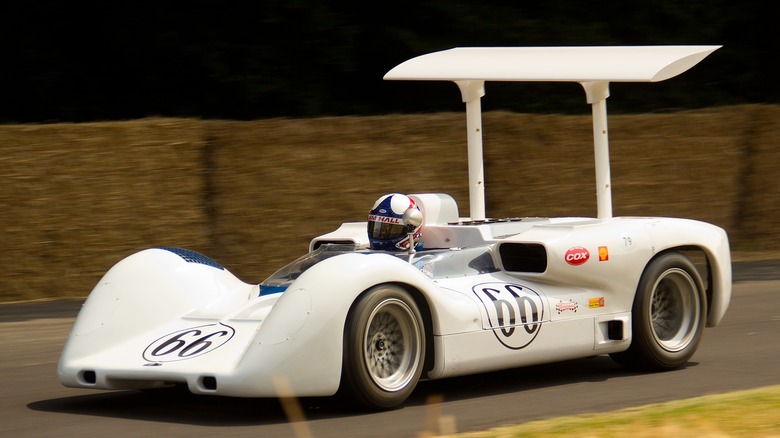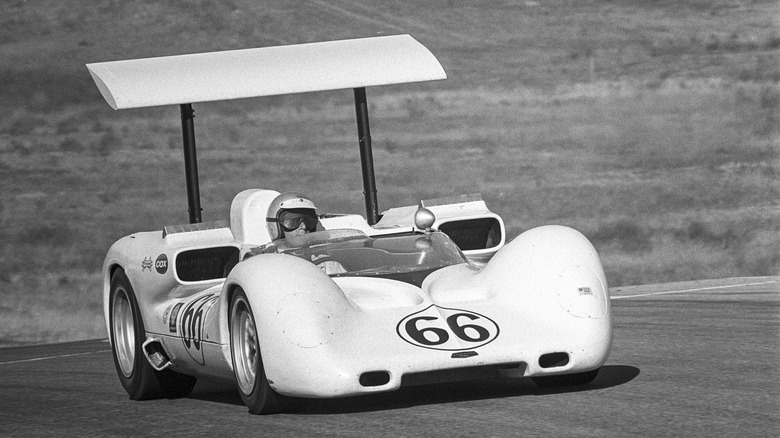Why The Bizarre Looking Chaparral 2E Was Banned From Racing
Race cars are the ultimate expression of "function over form." It doesn't necessarily matter if a car looks less than conventional as long as it wins races and doesn't fail on the track. The Dodge Charger Daytona and its sibling the Plymouth Superbird are perfect examples: Both of those cars look more like aircraft than race cars. Yet, the Dodge and Plymouth absolutely dominated in NASCAR in the early 1970s until officials pulled the plug.
Aerodynamics played a large part in the Chryslers' wacky appearance, as how a car moves through the air during a race is significantly more important than a normal looking car from the early 1970s. It needed a huge wing and nose cone to remain stable at high speed on the track during races. The Superbird and the Daytona were unique in that you could actually go to a Plymouth or Dodge dealership and buy one to drive home.
That was not the case, however, with another aerodynamically focused race car from the era — the Chapparal 2E, and maybe for good reason.
Too wacky for racing
Take one look at the 2E and you would be forgiven for having no idea what you're looking at. The giant wing is immediately evident, as well as the two large nostril-like openings on either side of the cockpit. Jim Hall, the designer and driver of the Chaparral 2E when it raced in 1966, was not at all concerned with aesthetics when conjuring up the racer. According to MotorTrend, the huge openings on the body allowed more air to get to the radiator in the back of the car. The giant wing, called a "flipper," moved up and down depending on how much downforce the driver wanted.
Mechanically, it was powered by a 327 cubic inch Chevy small block, and power was delivered through an automatic transmission. Most race cars were manuals at the time, so the automatic was another item on its long list of quirks. The flipper wing would soon act as a double-edged sword for Jim Hall. When used correctly, the wing provided immense downforce to keep the car planted at speed. When it didn't the car was liable to crash, which it did multiple times (via MotorTrend).
After those crashes, the movable wing was banned by the governing bodies of racing at the time, and the Chaparral 2E was retired, according to Car and Driver.

